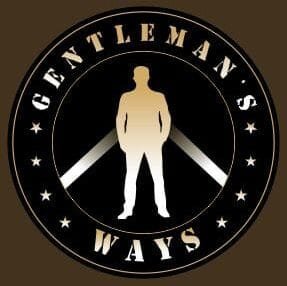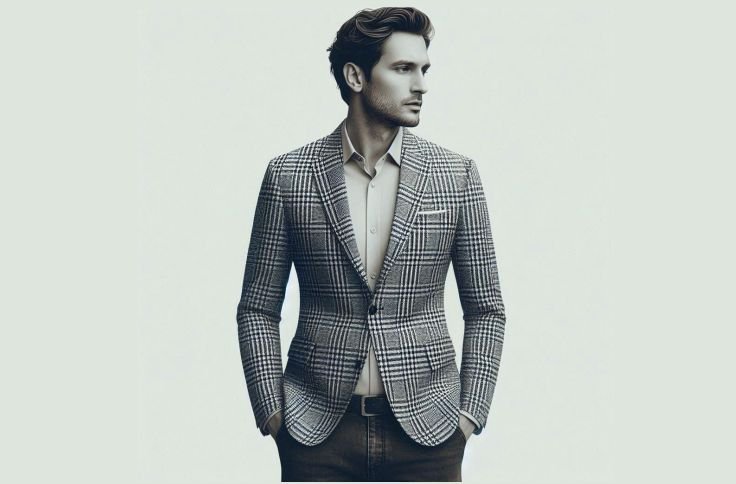Last updated on October 28th, 2025 at 01:10 pm
Get familiar with men’s blazers and learn the art of sharp dressing through fit, fabric, and finesse that define the gentleman’s wardrobe.
Men’s blazer is a must for every capsule wardrobe because it does more than just sit on your shoulders, it pull your entire look together.
It’s the piece you reach for when you want to look sharp without trying too hard.
Worn right, it shows confidence, intention, and style. But here’s the catch: not all jackets are the same.
A blazer isn’t a suit jacket or a sports coat, and mixing them up can throw off your outfit.
Fit matters. Fabric matters. Even the buttons play a role.
Whether you’re pairing it with tailored trousers for work or jeans for a weekend outing, the blazer can shift with your day.
It’s a must-have for any man who wants options without the guesswork.
In this guide, you’ll get all the information you need about men’s blazers.
Recommended: Men’s Style and Fashion Guide
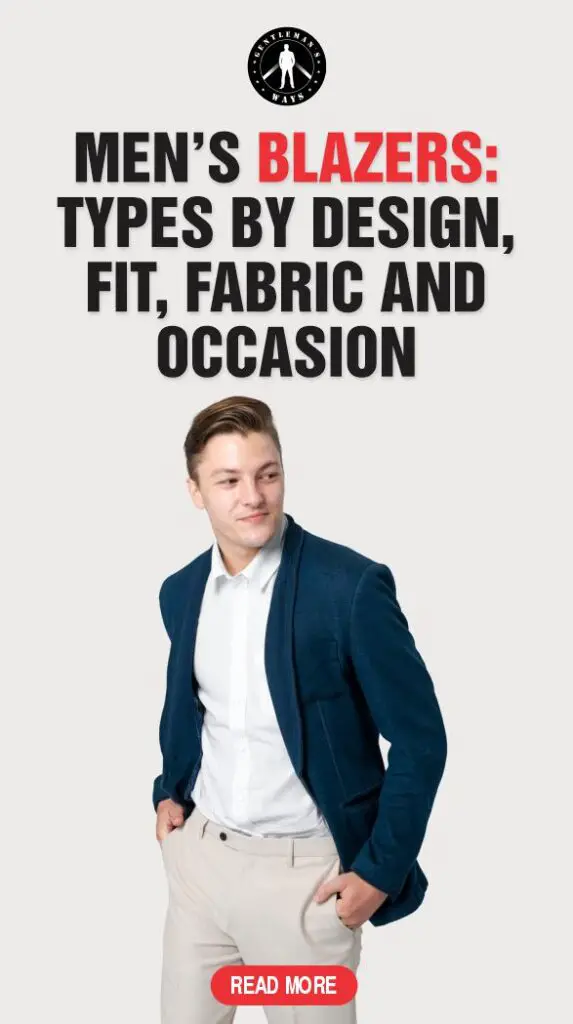
Table of Contents
- What is a Men’s Blazer?
- Types of Men’s Blazer Jackets by Design
- Types of Men’s Blazer Jackets by Fit
- Types of Men’s Blazer Jackets By Material
- Types of Men’s Blazer Jackets By Occasion and Purpose
- Types of Men’s Blazers by Details
- How to Choose the Right Blazer
- How to Style a Men’s Blazer Jacket
- Blazer Outfits by Occasion
- Seasonal Styling Tips for Men’s Blazers
- Caring for Your Blazer
- Common Blazer Mistakes to Avoid
- Frequently Asked Questions
- Conclusion
Related: Buying Guide for Casual Blazers for Men
What is a Men’s Blazer?
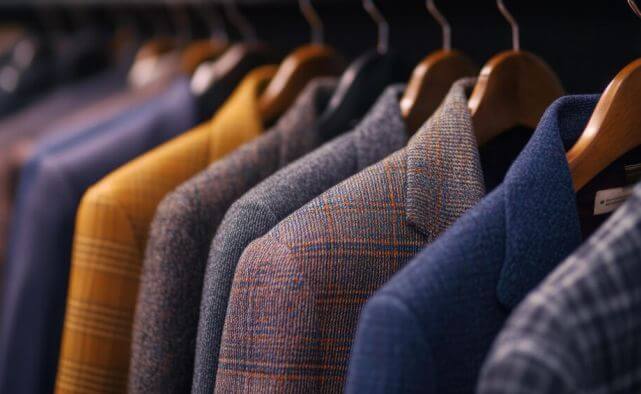
A men’s blazer, also called a men’s blazer jacket, is a tailored jacket designed to be worn as a standalone piece, not part of a matching suit. It strikes a balance between formal and casual, offering a structured look with more relaxed styling options.
Blazers often feature metal or contrasting buttons and come in a variety of fabrics like wool, cotton, and linen, making them suitable for different seasons and settings.
You can pair them with dress shirts, polos, or even tees, depending on the occasion.
The blazer first appeared in the early 1800s as part of British naval attire.
Over time, it transitioned from uniform to a staple in modern men’s fashion, known for its adaptability and timeless appeal.
Blazer or Blazer Jacket, What’s the Difference?
“Blazer” and “blazer jacket” are terms often used interchangeably, but they mean the same thing.
The word “jacket” simply emphasizes that it’s a tailored outer garment, much like saying “blazer coat.”
In menswear, a blazer, as described in the definition above,e is a structured yet standalone jacket that’s more formal than a sports coat but less formal than a suit jacket.
Whether someone says “blazer” or “blazer jacket,” they’re talking about the same classic piece.
The key is not the name but how you wear it, pairing it right and knowing when it fits the dress code makes all the difference.
Related Posts
How to Wear a Men’s Blazer with Jeans
Comprehensive Guide to Men’s Suits
Wedding with Blazers and Jeans
Understanding Men’s Blazer Size Chart
Types of Men’s Blazer Jackets by Design
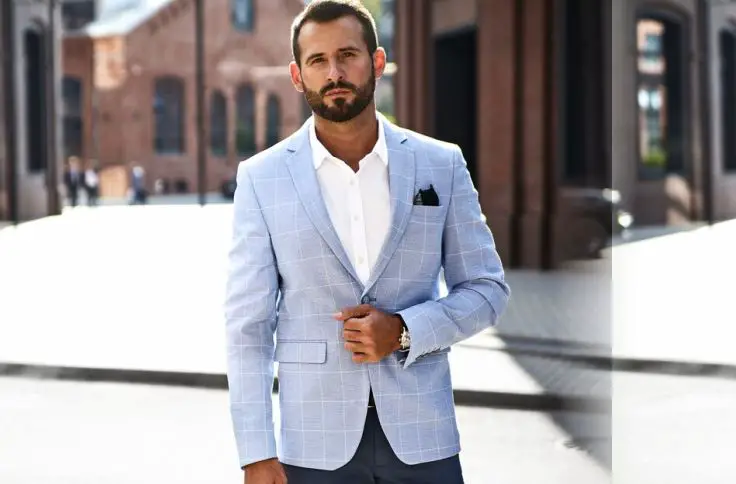
Choosing the right blazer jacket starts with knowing the different types and what each one brings to the table.
You don’t have to own dozens, but you do need to know which style works best for your setting and body type.
Structured vs Unstructured Blazers
You can feel the contrast between a structured and unstructured blazer the moment you wear it.
Structured blazers have clean lines, built-up shoulders, and often come with inner linings.
They create a defined silhouette, helping you look sharp at formal events or in the office.
They’re made to hold their shape and give off a polished feel. Unstructured blazers are the opposite: softer, lighter, and more relaxed.
They usually lack shoulder pads and linings, making them easy to move in.
These are ideal when you want to look put together without being too formal.
Think weekend plans, casual Fridays, or outdoor gatherings, anywhere comfort meets effortless style.
Related: Blazer vs Suit Jacket: How Do They Differ?
Single-Breasted vs Double-Breasted
Understanding blazer types starts with button placement. A single-breasted blazer has one row of buttons, usually one, two, or three, and sits flat against your torso.
It’s a classic go-to that pairs easily with jeans, chinos, or tailored trousers. It’s flexible enough for both casual and formal occasions.
A double-breasted blazer stands out with two rows of buttons and a more fitted shape.
It creates a bolder, more structured look and adds a touch of old-school formality.
You’ll see it worn at high-end dinners, weddings, or places where making a strong style statement matters.
One style leans simple, the other demands presence; you choose the vibe.
Casual vs Formal Blazers
The difference between casual and formal blazers comes down to the setting and details.
Casual blazers are designed to be easygoing: unlined or lightly structured, made with soft fabrics like cotton or linen, and often in colors beyond navy or black.
They look great over tees, polos, or casual button-downs. On the flip side, formal blazers bring more polish.
They’re usually wool or velvet, structured, and tailored to flatter your shape.
These are best worn with crisp shirts and dress shoes, not sneakers.
If the event calls for looking sharp without a full suit, a formal blazer gets the job done.
Related: How to Pick the Right Blazer Jackets for You
Types of Men’s Blazer Jackets by Fit
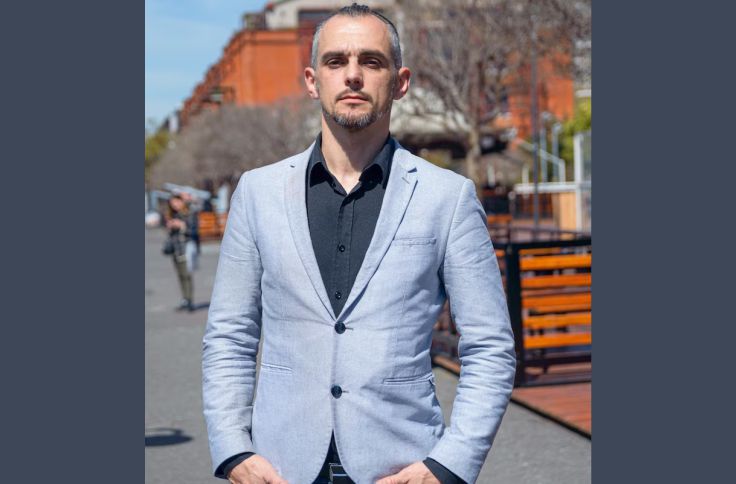
Men’s blazers come in various fits to match different body types and personal styles.
Whether you’re looking for a sharp, modern look or something more comfortable and classic, there’s a blazer fit for every occasion.
Below, we explore the most popular options:
Slim-Fit Blazers
Slim-fit blazers are all about a sleek, modern silhouette. Designed to hug the body without being too tight, these blazers create a sharp, tailored look.
Ideal for those who prefer a more contemporary style, slim-fit blazers pair well with skinny trousers or fitted jeans.
Whether you’re dressing for a business meeting or a night out, this style offers a polished appearance without compromising on comfort.
The clean lines and closer fit make it perfect for a man who wants to showcase a more defined frame, adding a touch of sophistication to everyday wear.
Related: What is a Dress Blazer: Tips and Styling Ideas
Regular-Fit Blazers
A regular-fit blazer strikes the perfect balance between comfort and structure.
This style provides more room through the chest and waist, giving you a relaxed yet tailored look.
It’s the go-to choice for those who want a more classic, traditional fit that’s neither too tight nor too loose.
Regular-fit blazers are versatile enough to wear to work or casual events, offering a timeless appearance that’s always appropriate.
If you’re after a blazer that combines both style and comfort, the regular fit is an excellent option that works for most body types.
Oversized Blazers
Oversized blazers are for those who want a bold, fashion-forward look.
With a looser fit and broader shoulders, this style is perfect for creating a laid-back, yet stylish silhouette.
Popular in street style and casual settings, oversized blazers offer freedom of movement and a relaxed vibe.
Pair oversized men’s jackets with skinny jeans or trousers to balance the proportions.
This trend embraces a looser, boxier shape that can still look polished when styled right, offering an edgier approach to blazers that’s ideal for creative and casual occasions.
Related: Blazers vs Sport Coat vs Suit Jacket
Types of Men’s Blazer Jackets By Material
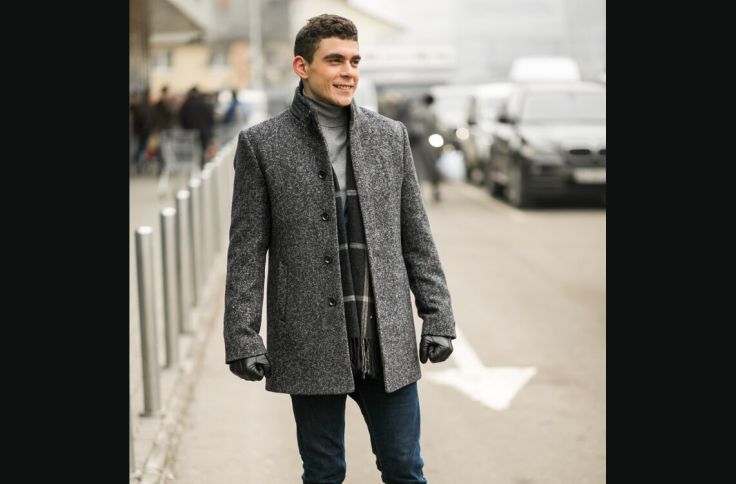
The material of your blazer can drastically change its look and functionality.
From lightweight fabrics perfect for summer to warm and structured options for cooler months, each material has unique benefits.
Below, we explore some popular blazer materials to suit different occasions:
Wool Blazers
Wool blazers are the epitome of sophistication and warmth.
Known for their durability and luxurious texture, wool is a staple fabric for formal and semi-formal occasions.
Wool blazers are naturally insulating, making them perfect for cooler weather.
Whether in a dark shade for winter business meetings or a lighter hue for spring, wool blazers provide a timeless look that transitions seamlessly between seasons.
Their structured feel also offers excellent shape retention, ensuring you look sharp throughout the day.
A wool blazer is a reliable choice for any wardrobe that needs style and practicality.
Linen Men’s Blazer Jackets
Linen blazers are lightweight, breathable, and perfect for warmer weather.
Made from the fibers of the flax plant, linen is naturally moisture-wicking, keeping you cool even during the hottest days.
Linen blazers have a more relaxed, casual feel with a slightly wrinkled texture that adds character.
They’re ideal for summer events, beach weddings, or outdoor gatherings.
While linen might not offer the structure of heavier fabrics like wool, its natural feel and elegant simplicity make it a fantastic choice for laid-back, warm-weather outfits.
Pair with light chinos or trousers for a fresh, summery look.
Related: Affordable Blazers for Men on a Budget
Cotton Blazers
Cotton blazers strike a balance between comfort and versatility.
A bit more casual than wool but still structured enough for semi-formal settings, cotton is a breathable fabric that works well in spring and fall.
These blazers are soft to the touch, comfortable, and easy to care for.
Cotton blazers come in a variety of colors and weights, making them perfect for both daytime and evening wear.
Whether paired with dress pants or jeans, a cotton blazer offers a refined yet casual aesthetic, making it a solid choice for a variety of occasions.
Velvet and Tweed
Velvet and tweed men’s blazer jackets are for those who want to make a statement.
Velvet, with its soft, rich texture, adds luxury and depth to any outfit, making it an excellent choice for evening events or formal gatherings.
It’s the fabric of choice when you want to stand out and exude opulence.
Tweed, on the other hand, is a textured wool fabric known for its warmth and classic appeal.
It’s perfect for colder months and lends itself to a more traditional, country-inspired look.
Both materials are perfect for those who want something different from the usual fabric options.
Recommended: Summer Blazers Ideas for Men
Types of Men’s Blazer Jackets By Occasion and Purpose
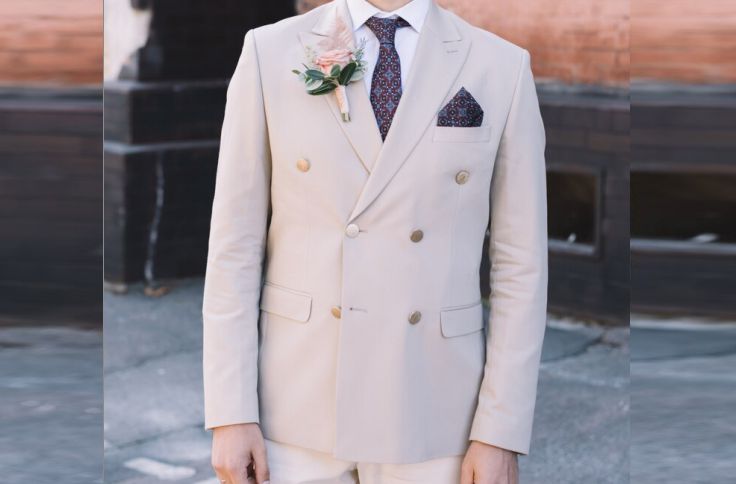
Blazers are versatile pieces that can serve a variety of purposes, from formal occasions to casual outings.
Understanding which blazer suits your needs can help you achieve the perfect look.
Below, we explore the different types of blazers based on occasion and purpose:
Formal Blazers
Formal blazers are typically made from high-quality fabrics like wool or a wool blend, offering a refined, polished look for business meetings, galas, or upscale events.
They tend to have structured shoulders, defined lines, and a tailored fit, ensuring a sharp appearance.
Dark colors such as navy, charcoal, or black are typical for formal blazers, and they pair well with formal trousers or dress pants.
When you need to dress to impress at events like weddings or dinner parties, a formal blazer will add an air of sophistication and elegance.
Casual Blazers
Casual blazers offer a laid-back, stylish option for everyday wear.
Typically made from lighter fabrics like cotton, linen, or even unstructured wool, casual blazers have a relaxed fit and softer structure, perfect for non-formal occasions.
Whether you’re heading to a brunch, a casual business meeting, or a date, a casual blazer adds an elevated touch without being too formal.
Pair it with jeans, chinos, or even shorts for a smart-casual look that’s comfortable yet put together.
Casual blazers are an easy way to maintain style while keeping things low-key.
Sport Blazers
Sport Blazers combine style with practicality, designed for active or outdoor settings.
Often made from more durable fabrics like tweed or flannel, they offer comfort and warmth while maintaining a sharp appearance.
Sport blazers tend to feature unique details like elbow patches or textured fabrics, adding an element of interest and ruggedness.
Perfect for activities like golfing, tennis, or casual outings, these blazers provide an athletic yet polished look.
They pair well with chinos or even jeans, making them an excellent option for men who want a sporty yet sophisticated look.
Related: Blazers vs Coats: How Do They Differ?
Types of Men’s Blazers by Details
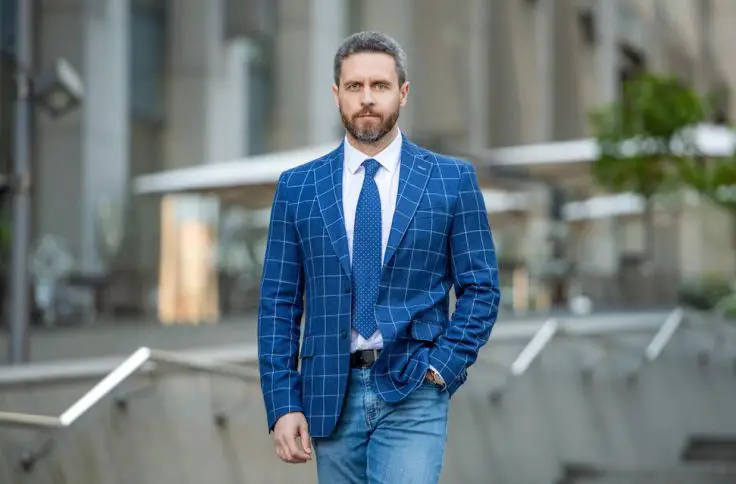
Blazers can feature a variety of details that add flair and personality to your look.
From bold patterns to timeless solids and unique textures, the right details can elevate any outfit.
Below, we explore different types of blazers by their design details:
Patterned Blazers
Patterned blazers are a bold choice for those who want to stand out. With patterns like checks, stripes, or plaids, these blazers bring personality and style to any outfit.
Perfect for creative environments, night outs, or occasions where you want to make a statement, patterned blazers are a fun way to add dimension and flair.
Pair them with solid trousers or dark jeans to keep the focus on the blazer.
The key with patterned blazers is balance; let the blazer do the talking while keeping the rest of your outfit simple.
Plain Blazers
Plain blazers are the foundation of any wardrobe, offering versatility and timeless appeal.
Made from solid-colored fabrics like navy, black, or grey, these blazers can be dressed up or down depending on the occasion.
A plain blazer’s simple design makes it the perfect choice for business meetings, formal dinners, or casual nights out.
Pair it with nearly any shirt, trousers, or shoes for a polished, clean look.
A plain blazer is a wardrobe staple that will never go out of style and serves as the perfect canvas for accessorizing.
Textured Blazers
Textured blazers add depth and interest to your wardrobe without being overwhelming.
Fabrics like corduroy, tweed, or seersucker offer a distinct texture that gives your blazer a more relaxed, unique feel.
These blazers are perfect for fall or winter, providing extra warmth without sacrificing style.
A textured blazer is often seen in casual or semi-formal settings, where you want to add a touch of personality without going overboard.
Pair with solid colors to let the texture stand out. It’s a great way to break away from traditional smooth fabrics while staying stylish.
How to Choose the Right Blazer
When picking the right blazer, focus on fit, style, size, and color to make sure it suits you.
Fit
The fit is key to how well the blazer flatters your body. There are three main types: slim, classic, and relaxed.
The slim fit hugs your body for a modern look, while the classic fit gives more room, working well for many body types.
The relaxed fit prioritizes comfort and is great for casual wear.
Size
To get the right size, measure your shoulders, chest, and waist. Use sizing charts from brands to guide you.
A good fit means you can move your shoulders easily, and the blazer’s shoulders should line up with yours.
The sleeves should hit just at your wrist, and the blazer should cover your seat.
Details
Elements like lapels, buttons, vents, and pockets impact the overall style. Lapels come in notched, peaked, or shawl styles, which can reflect the formality of the event.
Choose between a single or double button closure, as both affect style and fit.
Vents, either single or double, add mobility.
Consider pocket placement too, as it affects both style and practicality.
Color
The color is another important factor. Classic shades like navy, black, grey, and beige are versatile.
Navy is ideal for work, black works best for formal events, and grey transitions between professional and casual.
Beige is perfect for warmer weather and more relaxed settings, like summer outings.
By focusing on these key areas, you’ll choose a blazer that works for your style and needs.
How to Style a Men’s Blazer Jacket
A well-styled blazer can take your outfit from average to polished, making it a must-have in your wardrobe.
Here’s how to wear it for different occasions:
Smart Casual Look
To create a smart casual outfit, pair your blazer with tailored chinos or well-fitted jeans. Add a crisp white shirt or a classic crew-neck t-shirt to keep the look sharp but relaxed.
The blazer should complement the color and fabric of your bottoms, try a navy blazer with light-colored chinos for a balanced and appealing look.
Business Casual
For a business casual vibe, layer a blazer over a button-down shirt. Choose trousers in a coordinating color and finish the outfit with leather loafers.
This combo works for office settings while still allowing your personality to shine through.
Experiment with textures too: a wool blazer with corduroy pants can add depth and interest. Don’t shy away from patterns like a checked blazer to add a bit of flair.
Formal Occasions
For formal events, a blazer is a must when paired with a tailored dress shirt and dress trousers. Add a tie or bow tie to up the look.
Stick with classic colors like black, navy, or charcoal for a timeless appearance. If you want to modernize the style, layer a fine-knit turtleneck under your blazer.
Accessories like a pocket square or lapel pin can add a personal touch, so choose them carefully to complement, not overpower, your blazer.
Blazer Outfits by Occasion
Blazers are adaptable pieces that can upgrade your outfit for any occasion. The key is choosing the right style and fit to match the event.
Here’s how to wear a blazer for different settings:
Weddings
For weddings, choose a lightweight blazer made from linen or cotton, especially for warm weather.
A beige or light grey blazer paired with a white shirt and tailored trousers gives a polished yet relaxed look.
Add a floral pocket square or tie for some personality, striking the right balance between professional and festive.
First Date
On a first date, a well-chosen blazer adds confidence and style. Go for a dark, fitted blazer in navy or charcoal.
Pair it with a smart casual shirt, like a fitted polo or button-down, and combine with chinos or dark jeans.
This outfit is relaxed yet polished, showing you put thought into your appearance without feeling too formal.
Office Wear
Blazers are a staple in any professional wardrobe. A classic navy or black blazer with a dress shirt and dress pants creates a sharp, business-ready look.
For more casual office settings, consider a patterned blazer to stand out.
Just keep the rest of your outfit simple to let the blazer shine, while still meeting professional standards.
Casual Weekend Outings
For casual weekends, a blazer can complete a smart-casual look. Go for lightweight fabrics and relaxed colors, like muted tones or checks.
Pair it with a simple tee or knitwear, well-fitted jeans, and casual shoes.
This effortless combo is perfect for a brunch or a day out in the city, keeping you comfortable and stylish.
Seasonal Styling Tips for Men’s Blazers
Choosing the right blazer for each season keeps your look fresh and comfortable throughout the year. Here’s how to style your blazer for different weather conditions:
Summer
In the summer, lightweight and breathable fabrics are key. Linen and cotton are great choices, as they allow air to circulate and keep you cool.
Go for lighter colors like pastels or beige to match the summer vibe and reflect sunlight.
Pair your blazer with short-sleeved shirts or lightweight t-shirts for a smart-casual look that works well for outdoor events or summer gatherings.
Fall
As the weather cools, switch to slightly heavier blazers made from materials like tweed or wool blends.
These fabrics offer warmth while maintaining style. Layering becomes important, wear a light knit sweater or a fitted shirt under your blazer.
Earthy tones like olive green, brown, and burgundy fit well with the fall palette.
Add accessories like scarves for extra warmth and a personal touch.
Winter
In winter, focus on warmth and layers. Heavier wool or cashmere blazers are perfect for cold temperatures.
Pair your blazer with a thicker sweater to stay warm without losing your polished look.
For extra warmth, consider wearing thermal undershirts or long-sleeve shirts underneath.
Stick with darker colors like navy, charcoal, and black for a classic, sophisticated appearance.
Caring for Your Blazer
To keep your blazer looking sharp and lasting longer, proper care is key. Here’s how to maintain your blazer’s quality over time:
Cleaning Your Blazer
Blazers are typically made from wool, cotton, or a blend of fabrics. Knowing when to dry clean or spot clean your blazer can help preserve its quality.
- Spot Cleaning: For minor stains, a damp cloth with gentle detergent designed for fabrics works best. This keeps the rest of the blazer intact while addressing the spot.
- Dry Cleaning: For a deep clean, especially after heavy use or when your blazer picks up odors, dry cleaning is your best option. However, limit dry cleaning to a few times a season to protect the fabric from the chemicals used.
Storing Your Blazer
Proper storage helps maintain the shape and fabric of your blazer:
- Use a Padded Hanger: Always hang your blazer on a sturdy, padded hanger to keep the shoulders intact. Avoid wire hangers, as they can distort the fabric.
- Store in a Cool, Dry Place: Keep your blazer in a well-ventilated area away from direct sunlight to prevent fading and fabric damage. For long-term storage, consider a breathable garment bag to protect it from dust and keep airflow.
Additional Tips for Maintenance
To keep your blazer looking fresh:
Brush Off Dust and Lint: Use a fabric brush regularly to remove dust and lint, preventing buildup and maintaining the fabric’s appearance.
Reshape with Steaming: Lightly steam your blazer to remove wrinkles and help it retain its structure.
Common Blazer Mistakes to Avoid
Wearing a blazer can instantly improve your look, adding sophistication and flexibility to your outfits.
However, some common mistakes can undermine the impact of your blazer. Here’s how to avoid them and make sure you’re always looking sharp.
1. Getting the Fit Wrong
The most noticeable mistake is wearing a blazer that doesn’t fit properly. A blazer that’s too tight or too loose can throw off your whole look.
Make sure the blazer fits comfortably around the shoulders without being too tight or saggy.
The chest and waist should have enough room, but not be overly baggy. A well-fitted blazer will highlight your shape and make you feel more confident.
2. Mismatching Clothing Pieces
Pairing a blazer with the wrong trousers or shoes can ruin the look.
For example, wearing a formal blazer with casual shorts or sneakers sends the wrong message. Stick to clothing that complements each other.
A neutral-colored blazer works well with almost any style, but if you’re wearing a patterned blazer, balance it with solid-colored trousers.
Matching colors and styles will help you avoid looking mismatched.
3. Over-Accessorizing
Accessories can add a nice touch to your outfit, but too many can overwhelm your look. Keep accessories simple and purposeful.
A classic wristwatch or a pocket square will add a stylish element without taking the attention away from your blazer.
Also, be mindful of the colors and patterns in your accessories, making sure they complement, not compete, with your blazer.
By focusing on the fit, pairing your blazer with the right pieces, and keeping accessories minimal, you’ll avoid these common mistakes and achieve a polished, stylish appearance.
Frequently Asked Questions
What is the difference between a blazer and a suit jacket?
A blazer is a standalone jacket, while a suit jacket is part of a matching suit. Blazers are more versatile and less formal.
What are unstructured blazers best for?
Unstructured blazers are perfect for casual settings, offering comfort and a relaxed style without the formality of structured blazers. Ideal for weekend outings.
Can I wear a blazer to a wedding?
Yes, a formal blazer, typically made from wool or velvet, can be worn to weddings. Pair it with dress trousers for a polished look.
What fabrics are best for summer blazers?
Linen and cotton are perfect for summer blazers, offering breathability and comfort in hot weather while maintaining a stylish and relaxed appearance.
How do I choose the right blazer fit?
Focus on body type and occasion. Slim-fit is modern and sleek, while regular-fit is classic and comfortable. Relaxed fits are ideal for casual wear.
Conclusion
Men’s blazers are an ageless wardrobe item, offering flexibility and style for various occasions.
By understanding the different types of blazers based on fit, design, fabric, and occasion, you can choose the right one to suit your body type and needs.
Structured blazers offer a polished, sharp look, while unstructured ones provide a more relaxed, casual vibe.
Fabrics like wool, linen, and cotton ensure you’re covered for all seasons.
Whether you’re dressing for work, a wedding, or a casual outing, a blazer enhances your outfit with confidence and finesse.
Choose wisely, and you’ll always have the right piece for any occasion, elevating your style effortlessly.
References
Pyo Merez is a men’s lifestyle enthusiast and writer about the gentleman’s place and impact on society. Raised by a distinguished gentleman dad, he offers unique insights into how the mind of a gentleman works and how societal norms shape gentlemen’s identity and vice versa.
Through his insightful articles, Pyo taps into the depths of gentleman culture to provide perspectives on etiquette and manners in modern society.
